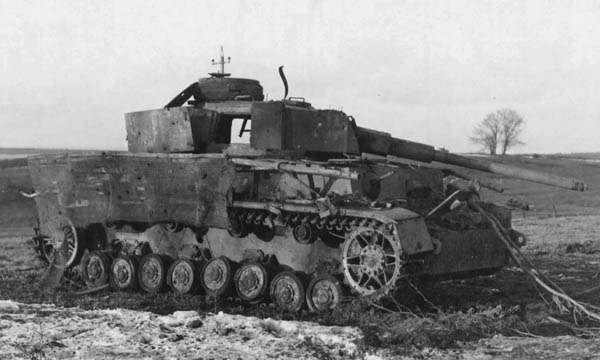A U.S. Air Force photograph shows a destroyed late-model Panzer IV with steel mesh (Drahtgeflecht) Schürzen on the hull and standard steel plate Schürzen around the turret. The original caption describes the Panzer IV as a victim of the Ninth Air Force in the Luxembourg sector during the German retreat to the Siegfried Line.

Destroyed Panzer IV Ausf. J. (U.S. Air Force Photo)
Schürzen were originally designed as additional armor protection against Russian antitank rifles, but Schürzen also served as stand-off armor against the U.S. bazooka hollow-charge antitank rocket launcher. Schürzen were widely used on Panzer III, Panzer IV, and Sturmgeschütz. The Germans found mesh skirts were as effective as steel plates while using less raw material and saving weight.
The following intelligence report on German armor skirting appeared in Tactical and Technical Trends, No. 40, December 16, 1943:
Armor Skirting on German Tanks From both Allied and German sources, reports have come in of additional armored skirting applied to the sides of German tanks and self-moving guns to protect the tracks, bogies and turret. Photographs show such plating on the PzKw 3 and 4, where the plates are hung from a bar resembling a hand-rail running above the upper track guard and from rather light brackets extending outward about 18 inches from the turret. What appeared to be a 75-mm self-moving gun was partially protected by similar side plates over the bogies. This armor is reported to be light — 4 to 6 millimeters (.16 to .24 in) — and is said to give protection against hollow-charge shells, 7.92-mm tungsten carbide core AT ammunition, and 20-mm tungsten carbide core ammunition. This armor might cause a high-velocity AP shot or shell to deflect and strike the main armor sideways or at an angle, but covering the bogies or Christie wheels would make the identification of a tank more difficult, except at short ranges.










It’s posts like this that keep me coming back and checking this site regularly, thanks for the info!